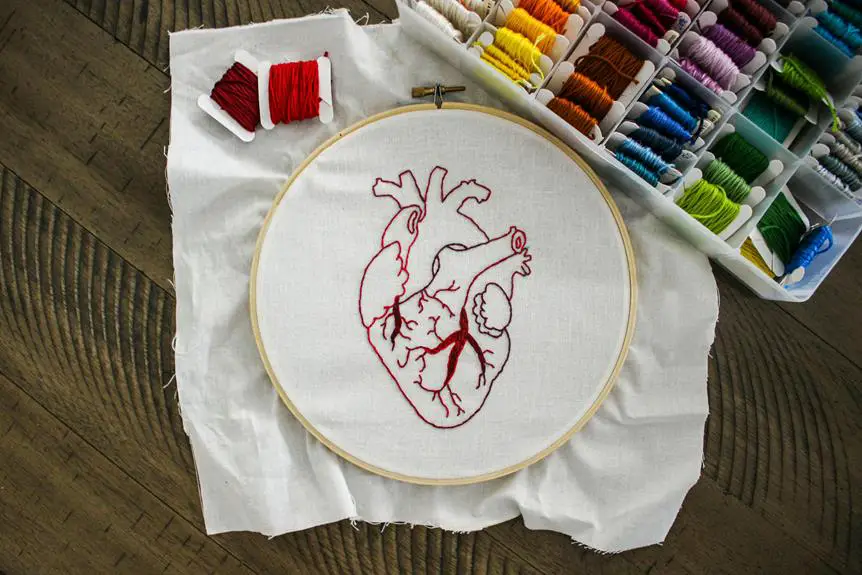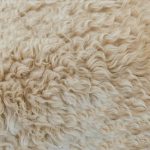You've probably worked with French terry fabric before and noticed how beautifully soft it can be – but also how notoriously difficult it is to dye evenly. As you'll soon find out, that's just the tip of the iceberg. French terry's unique construction and varying thickness create uneven dye absorption issues that can result in patchy, unflattering finishes. And if that's not enough, this fabric also tends to shrink significantly during the dyeing process, potentially altering its texture entirely. You may wonder what else you can expect from the dyeing process. Let's break it down.
Table of Contents
Uneven Dye Absorption Issues
When dyeing French terry fabric, you may notice that the color doesn't penetrate evenly, resulting in blotchy, patchy, or streaky appearances, particularly in areas with dense loops or varying fabric thickness. This uneven dye absorption can be frustrating, especially if you're trying to achieve a uniform color.
The problem often lies in the fabric's unique structure. French terry has a looped pile on one side and a smooth surface on the other, which can cause dye to absorb differently on each side. Additionally, the fabric's thickness can vary, leading to inconsistent dye penetration. You may notice that the color appears more intense in areas with looser loops or thinner fabric, while areas with denser loops or thicker fabric appear lighter or patchy.
To minimize uneven dye absorption, you can try adjusting your dyeing technique. Using a higher dye concentration or longer dyeing time can help ensure more even color penetration. You can also experiment with different dyeing methods, such as hand painting or shibori, to create unique, intentional patterns that work with the fabric's natural texture.
Shrinkage and Loss of Texture
As you dye French terry fabric, you'll also need to consider the risk of shrinkage and loss of texture, which can dramatically alter the fabric's appearance and feel. French terry fabric is prone to shrinkage due to its looped pile construction, which can cause it to contract and lose its softness.
This can be especially problematic if you're trying to achieve a specific fit or texture in your final product.
To minimize shrinkage, it's essential to pre-treat the fabric before dyeing. This can involve washing and drying the fabric to remove any finishes that may affect the dye, as well as to relax the fibers and reduce the risk of shrinkage.
You should also use a dye that's specifically designed for French terry fabric, as these dyes are formulated to penetrate the fabric evenly and minimize shrinkage.
Additionally, you can take steps to preserve the fabric's texture during the dyeing process. This can involve using a gentle dyeing method, such as hand dyeing or low-temperature dyeing, to prevent the fibers from felting or becoming distorted.
Color Variation and Inconsistency
Color variation and inconsistency can be a major challenge when dyeing French terry fabric, and you'll need to consider the unique characteristics of this fabric to achieve a consistent color. French terry fabric has a looped pile construction, which can cause uneven dye absorption and lead to color variation. Additionally, the fabric's cotton content can also affect the dyeing process, as cotton fibers can take dye differently than other fibers.
| Factors Affecting Color Variation | Description |
|---|---|
| Fabric Construction | Looped pile construction can cause uneven dye absorption |
| Cotton Content | Cotton fibers can take dye differently than other fibers |
| Dyeing Method | Different dyeing methods can produce varying results |
To minimize color variation and inconsistency, you'll need to carefully select the right dyeing method and consider the fabric's unique characteristics. This may involve using specialized dyes or adjusting the dyeing process to ensure even color absorption. By taking these factors into account, you can achieve a more consistent color and produce high-quality French terry fabric.
Pilling and Fabric Damage Risks
Most French terry fabric dyers will encounter pilling and fabric damage risks at some point, which can significantly impact the overall quality and appearance of the final product. When you're working with French terry fabric, you'll need to be mindful of the potential for pilling and damage, especially during the dyeing process.
Pilling occurs when fibers break off and mat together, creating unsightly balls of fiber on the fabric's surface. Fabric damage can also occur due to excessive agitation, high temperatures, or harsh chemicals.
To minimize the risk of pilling and fabric damage, you'll want to take a few precautions.
- Use gentle agitation and avoid over-processing the fabric during the dyeing process.
- Choose dyes and chemicals that are specifically designed for use with French terry fabric.
Difficulty Achieving Vibrant Colors
Achieving vibrant colors on French terry fabric can be a challenge, especially when working with pastel shades or deep, rich tones, which often require specialized dyes and techniques. You may find that the colors don't penetrate evenly, resulting in a mottled or faded appearance. This is because French terry fabric has a unique texture that can make it difficult for dyes to bind evenly.
When working with French terry, you'll need to choose dyes that are specifically designed for this type of fabric. These dyes are usually formulated to penetrate the fabric's thick loops and cut piles, ensuring that the color is evenly distributed. You may also need to adjust your dyeing technique, using techniques such as steaming or using a dye fixative to help the colors set.
It's also important to note that some colors may not be achievable on French terry fabric, no matter how hard you try. For example, very bright or neon colors may not be possible due to the fabric's natural fibers and texture. By understanding the limitations of French terry fabric, you can plan your dyeing project accordingly and achieve the best possible results.
Frequently Asked Questions
Can French Terry Fabric Be Dyed at Home?
You can attempt to dye French terry fabric at home, but be prepared for varying results. The process can be trial-and-error, as the fabric's texture and weave can affect dye absorption and final color appearance.
How to Prevent Dye From Bleeding on French Terry?
To prevent dye from bleeding on French terry, you'll want to pre-treat the fabric with a dye fixative or vinegar before dyeing, and then wash it in cold water to set the color.
Can I Use Natural Dyes on French Terry Fabric?
You can definitely experiment with natural dyes on French terry fabric, but keep in mind that the results may vary in colorfastness and intensity. You'll need to research the specific dye and fabric preparation required.
Does French Terry Fabric Require Special Dye Fixatives?
When you dye French terry fabric, you'll need to consider special dye fixatives to ensure the color lasts. You'll want to use a fixative specifically designed for cotton-rich fabrics like French terry to prevent fading and bleeding.
Can I Dye French Terry Fabric in a Washing Machine?
You can't dye French terry fabric in a washing machine, as it won't provide even color distribution and may damage the fabric. Instead, use a large bucket or a dyeing machine to achieve the best results.
- How Does Ring Spun Cotton Affect Garment Fit and Shape Retention? - August 13, 2024
- What Are the Challenges in Producing Ring Spun Cotton? - August 13, 2024
- Is Ring Spun Cotton Suitable for Plus-Size Clothing? - August 13, 2024







